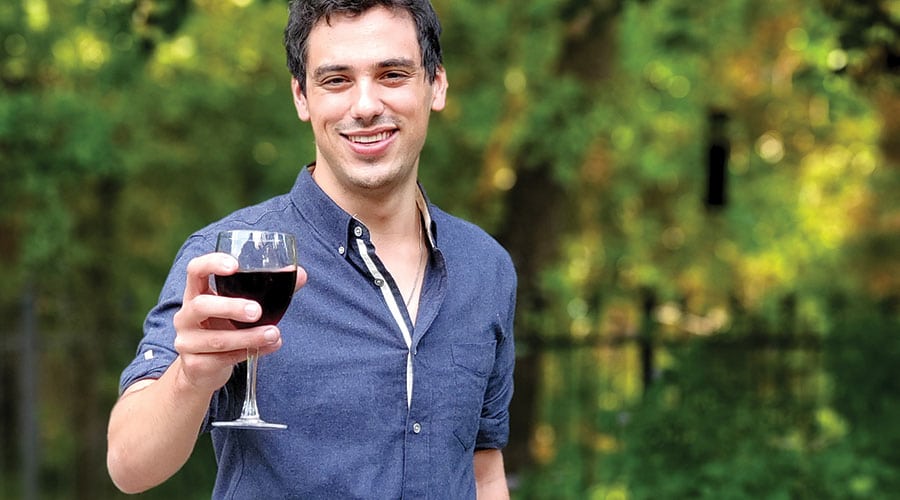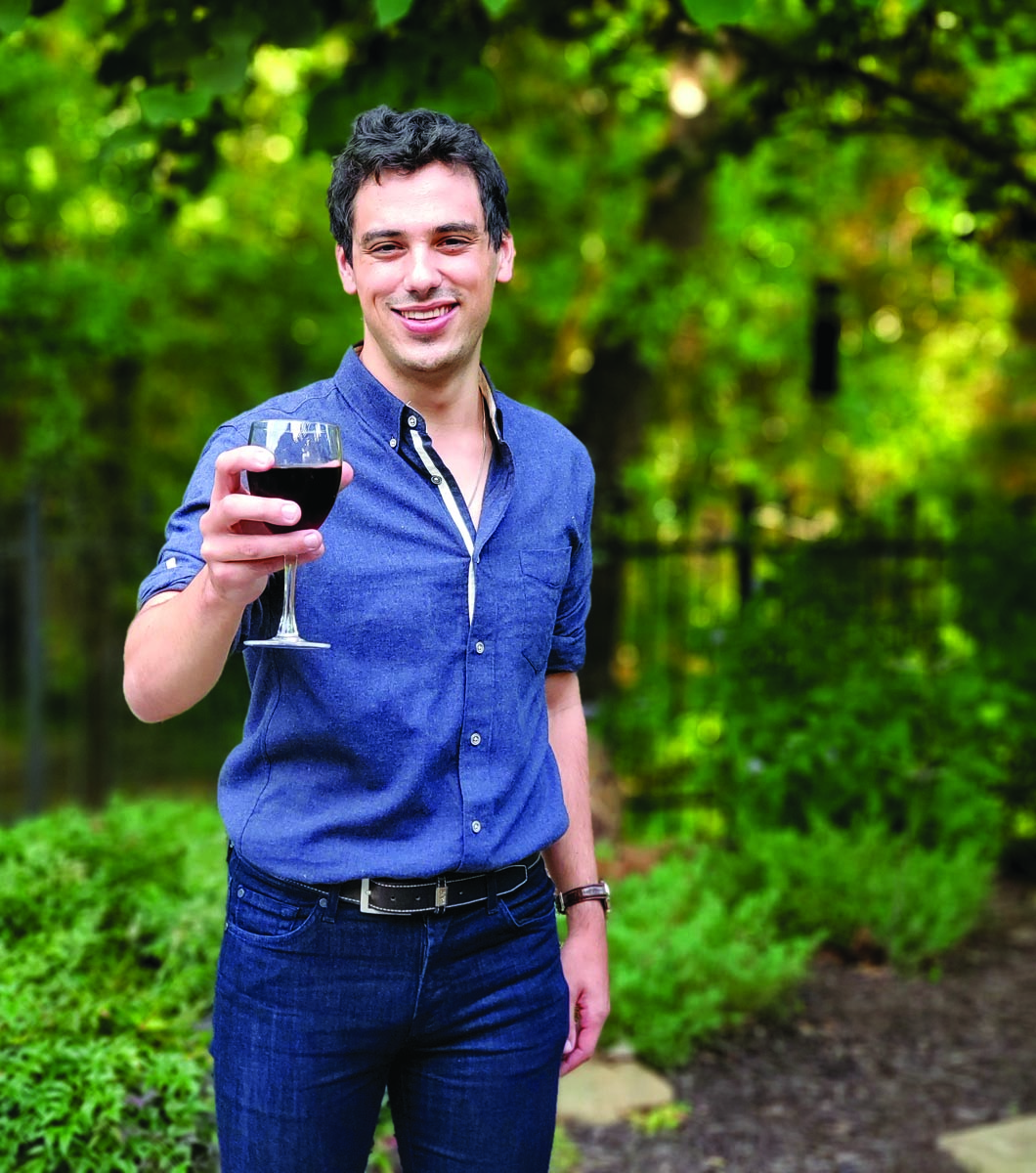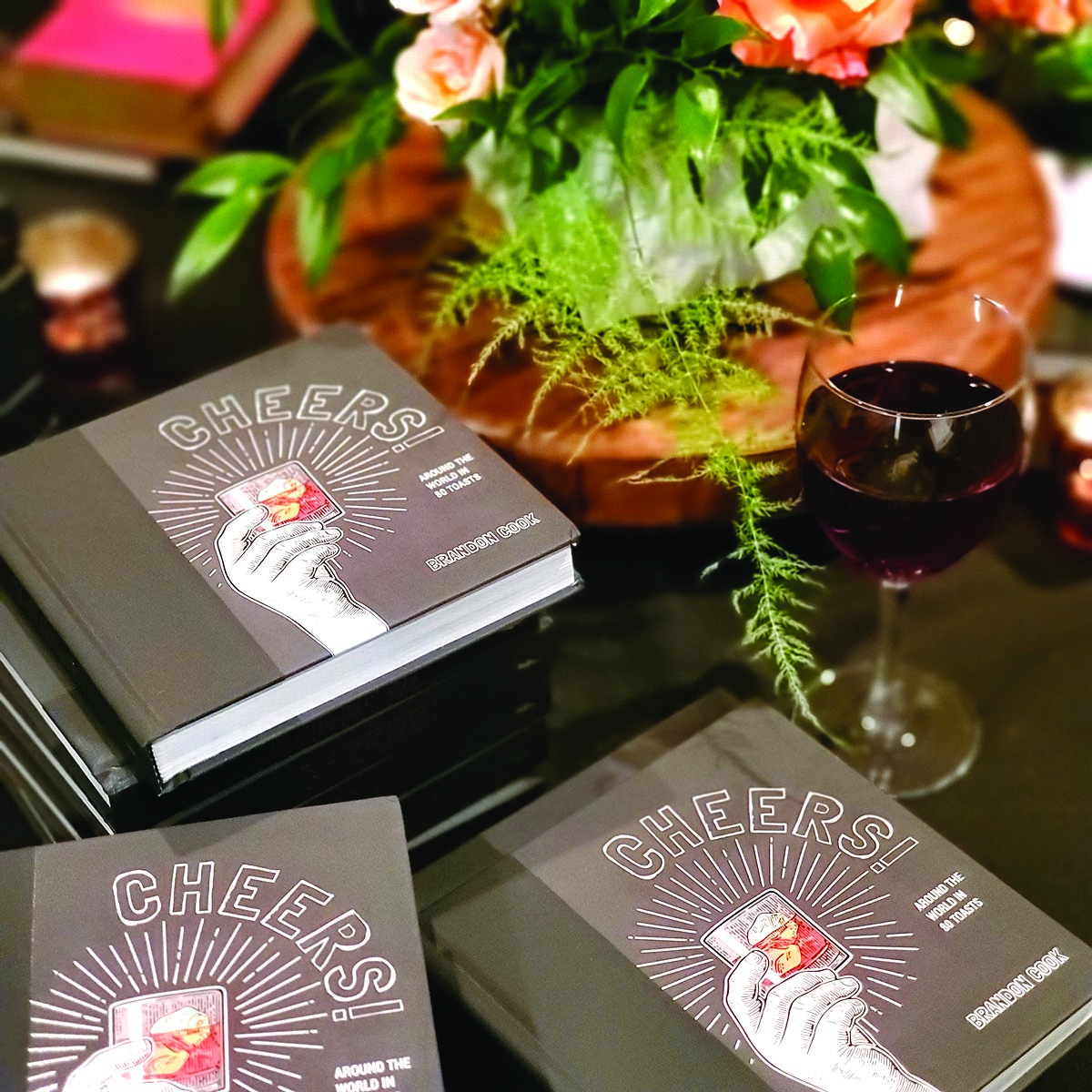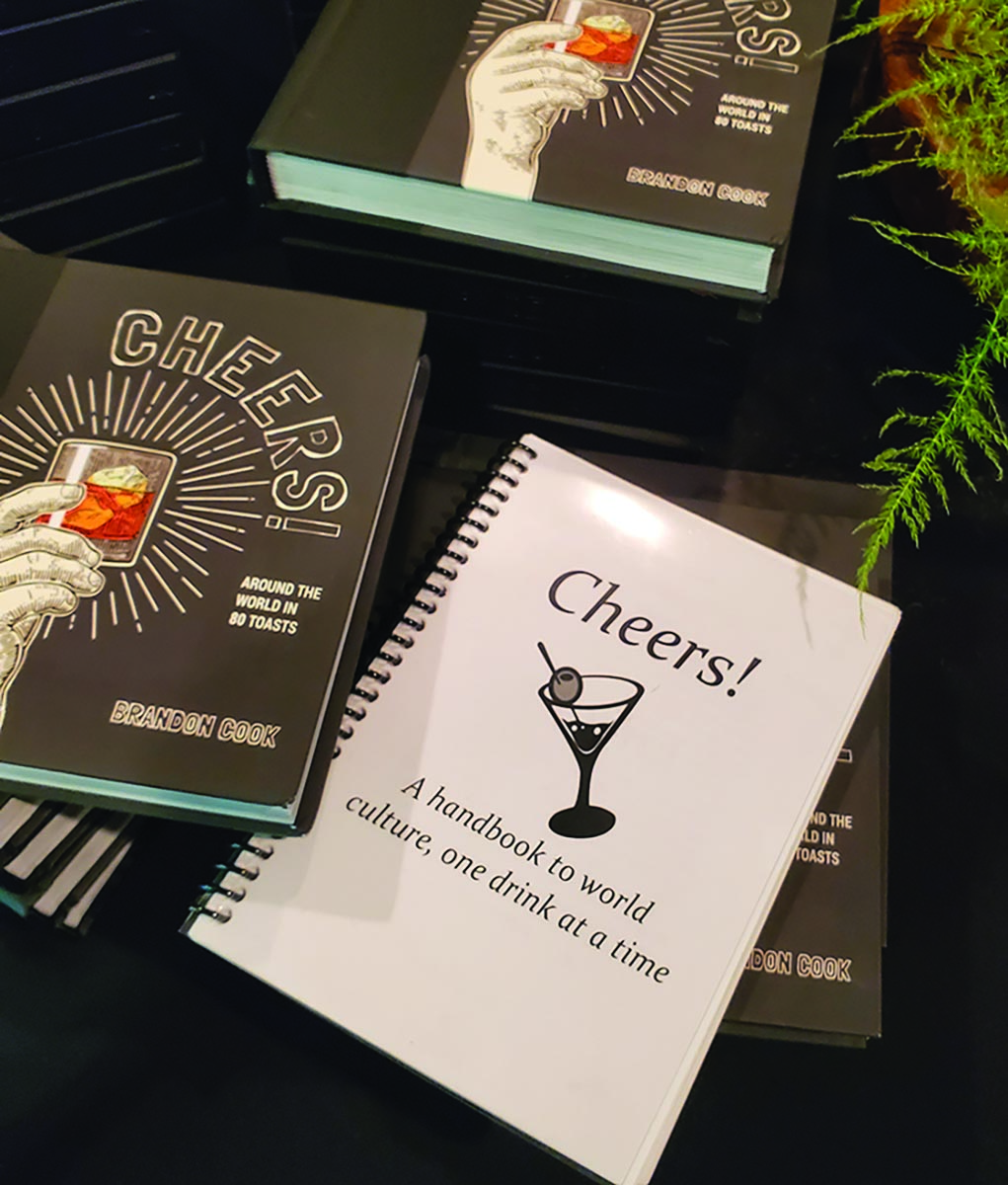
The Global Toast
By Babs Rodriguez
Photos by Meda Kessler
In Breton, raise a ceramic bowl of Kir Breton — a cider and black currant aperitif — and shout “joe d’ho kargouilhenn” to wish a companion “joy to your throat.”
Fortunately, Brandon Cook had regained his voice by the time we phoned him at his family’s summer house in Colorado. A couple of weeks earlier, the writer — recently returned from years of teaching English in Russia, China and the Czech Republic — spent 12 hours chatting with guests and autographing books at his boyhood home in Southlake. The come-and-go event was punctuated by hourly toasts and mini-speeches related to the contents of Cook’s newly published volume, Cheers! Around the World in 80 Toasts. The collection of wry historical insights about raising a glass in 100 countries and almost that many languages is served up with keen observations on humanity and linguistics.
The peripatetic storyteller credits his adventurous parents for his love of travel. After graduating from Carroll Senior High School, language studies at Indiana University segued into classes abroad and postgraduate travel in Europe. Stints on organic farms in far-flung spots, hosted by poets, actors and other creative souls, proved inspirational. The travel and the work — herding ponies, making cheese, restoring a 19th-century chateau — fueled a desire to connect dots of culture and history with the intrigue of language. (He speaks German, Russian, Mandarin and French.)
Brandon Cook grew up in Southlake, but his worldwide travels and love of language led to his new book, Cheers! Around the World in 80 Toasts. A Barnes & Noble customer since he was a boy, Cook’s photo hangs in the Town Square location, where he was giving a reading at age 11. He hopes to wrangle a book signing at his hometown bookstore in the near future.
Cook is witty, wise and charming, a scholar who eschews the label but easily drops literary and linguistic references without a pinch of pretension. “I think of myself as an enthusiast, not an intellectual. I am more of a happy spectator who eavesdrops on conversations and draws joy from whatever I learn, but pursuing language studies grew from my original infatuation with writing.”
He’s close to wrapping up his first fiction book but says finding the time to write is difficult. “My mom and dad are semiretired and go hard. I started my novel about a year ago, and I think this is my opportunity to get it into decent shape — unless my parents keep dragging me away from my work to join them hiking.” He laughs. “Yesterday’s outing was six hours.”
If it sounds like a role reversal, it’s fair to say that Cook is an old soul in a 29-year-old body.
“I’ve considered myself a writer since I was 6,” he says. That inclination grew more focused at 14, when he read an edition of A Clockwork Orange that included an essay Anthony Burgess wrote 24 years after the 1962 publication of his dystopian crime novel. “This man, who spoke six languages and had an amazing body of writing including a symphony, laments having written the one work that eclipses everything else he has done. His way with language, his ability to connect literary and cultural references into a flow of understanding, all wrestled into a tight 12-page essay that ends with a quote from Pontius Pilate — in Latin — wowed me with the power of cultural diversity to inform how you communicate.”
Cheers! evolved more from that epiphany than any interest in liquor (not all toasts in the book involve alcohol). During his travels, Cook’s parents would visit and press him for the local salute when raising a glass. In Austria, he shared the tradition of exclaiming “Prost” while staring hard into a drinking companion’s eyes. “If you don’t, the threatened result is seven years of bad sex.” Cook’s amused mother began urging him to collect toasting traditions in different countries. “She pressed me for years,” he says.
When Cook realized that almost every country has a version of moonshine served somewhere one can mingle with the natives, the idea caught fire with him, too. “Buried culture and history that isn’t always clearly expressed really comes out a couple of drinks in,” he says.
The first version of Cheers! evolved during a gap between jobs in Russia and China. Fifty toasts were explicated in a spiral-bound booklet pulled together at a Southlake Staples as a gift for his ever-supportive mom. Six months of downtime between a holiday in Nepal and a new job in Prague produced the final version of the book, which has since garnered attention by The New York Times. But Cook has been most gratified by the reception of his hometown, which he credits with his early infatuation with books and writing.
“Teachers in Southlake supported my curiosity from elementary school all the way to a 12th-grade book report that I wrote on A Portrait of the Artist as a Young Man by James Joyce. Because the teacher told me I did a good job, I decided to go ahead and tackle Ulysses later in the year. My teacher shared that report with another teacher. I don’t know if it was good or bad, but they recognized the ambition. They were always stoking embers I wasn’t even fully aware were there.”
Completion of a novel will be a new satisfaction for the man who began collecting books as a teenager. And it’s possible that a sequel to Cheers! may take him to India. First, he heads back to China, where he hopes to marry his Cantonese fiancee before Christmas. Down the road, the plan is to return to Southlake. “That is home,” he says. “Wherever I go, I still introduce myself as a Texan.”
THE DETAILS
Cheers! Around the World in 80 Toasts Whether you like to drink like a native when you travel or amuse friends over cocktails, author Brandon Cook has you covered for drinking songs and salutations — including pronunciation help for the 80 languages showcased. The linguistic unraveling and snippets of local lore gathered from 100 countries open windows on the world. There are tasting notes, trivia and humorous asides, too. And, while you’ll only find one paragraph devoted to Klingon in the nod to toasting in constructed tongues, Cook takes a deep dive into J.R.R. Tolkien’s Elvish languages Quenya and Sindarin, as well as Na’vi, which was created by James Cameron for the film Avatar. Purchase the handsome hardbound volume from your favorite bookseller (Red Lightning Books, $29).



